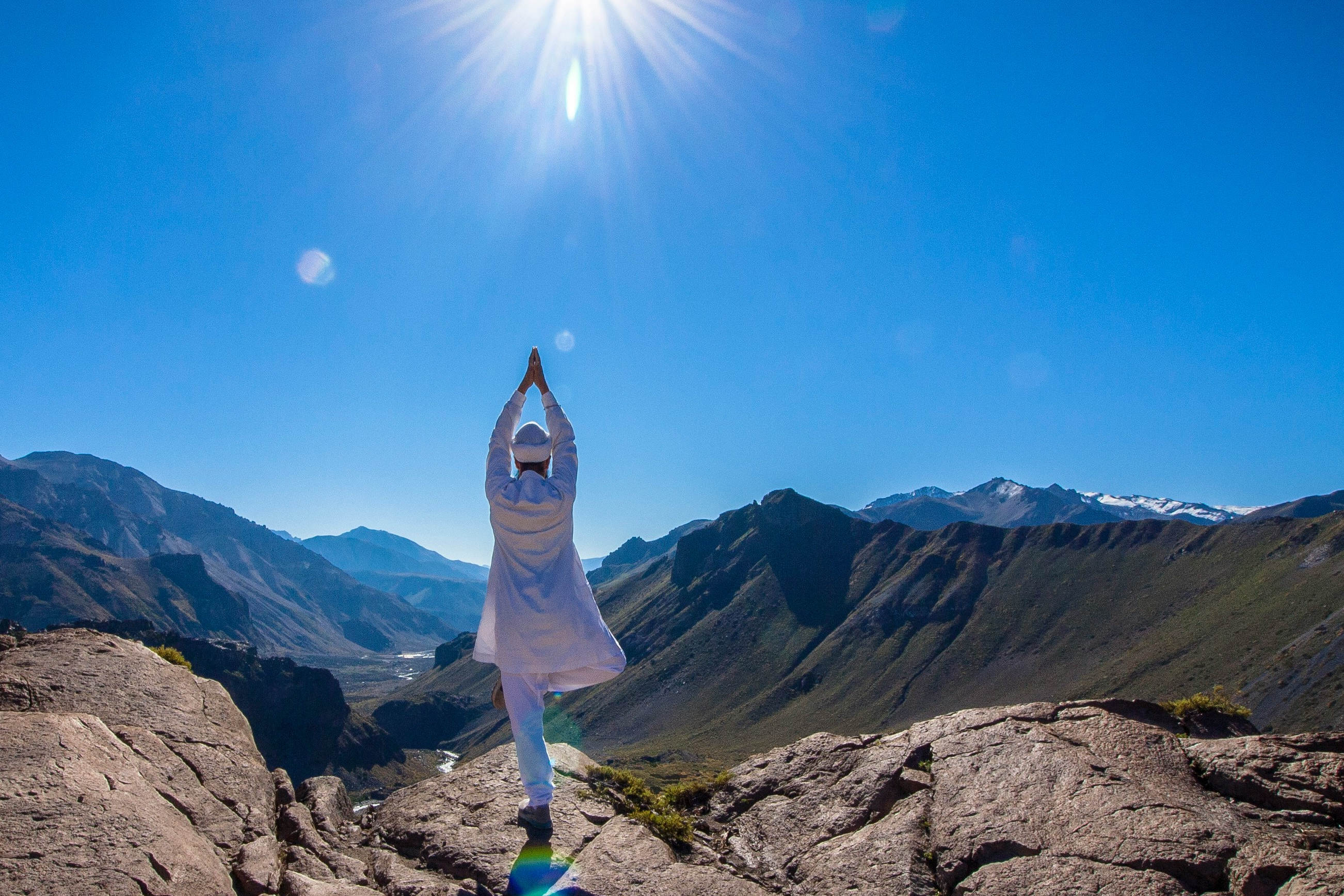
Le Kundalini Yoga est une puissante pratique spirituelle qui vise à réveiller l'énergie dormante du corps, conduisant à l'illumination et à une conscience accrue. Cependant, malgré ses bienfaits potentiels, de nombreux praticiens et experts mettent en garde contre les dangers qui y sont associés. De la détresse psychologique à l'inconfort physique en passant par les déséquilibres spirituels, le Kundalini Yoga peut être risqué pour les personnes non préparées. Cet article explore les raisons pour lesquelles le Kundalini Yoga est considéré comme dangereux et comment l'aborder avec prudence.
Panaprium est indépendant et pris en charge par les lecteurs. Si vous achetez quelque chose via notre lien, nous pouvons gagner une commission. Si vous le pouvez, veuillez nous soutenir sur une base mensuelle. La mise en place prend moins d'une minute et vous aurez un impact important chaque mois. Merci!
1. Comprendre l'énergie Kundalini
La kundalini est souvent décrite comme un serpent enroulé, dormant à la base de la colonne vertébrale. Par une méditation intense, des exercices de respiration (pranayama), des chants et des postures physiques (asanas), les pratiquants tentent d'éveiller cette énergie, lui permettant de s'élever à travers les chakras pour atteindre le chakra coronal (Sahasrara). Si ce processus peut apporter un éveil spirituel et une profonde conscience de soi, il n'est pas sans risques.
2. Dangers psychologiques du Kundalini Yoga
L'une des principales préoccupations concernant le Kundalini Yoga est son impact sur la santé mentale. Parmi les dangers psychologiques, on peut citer :
A. Syndrome de Kundalini
Ce terme désigne un ensemble de symptômes qui surviennent lorsque l'énergie de la Kundalini monte trop rapidement ou de manière inattendue. Ces symptômes peuvent inclure :
-
Sautes d'humeur intenses
-
Anxiété et crises de panique
-
Hallucinations ou délires
-
Dépression et pensées suicidaires
-
Sentiments de détachement de la réalité (déréalisation)
B. Surstimulation du système nerveux
L'éveil rapide de l'énergie peut submerger le système nerveux, entraînant insomnie, agitation ou incapacité à se concentrer. Certaines personnes déclarent avoir l'impression de perdre le contrôle de leur esprit, ce qui peut être profondément angoissant.
C. Crise spirituelle
Tout le monde n'est pas prêt à affronter les émotions profondes et le subconscient qui surgissent lors de l'éveil de la Kundalini. Certaines personnes traversent une crise existentielle, remettant en question leur identité, leurs croyances et leur but dans la vie, ce qui peut engendrer confusion et désespoir.
3. Risques physiques du Kundalini Yoga
Le Kundalini Yoga implique des techniques de respiration intenses, des mouvements répétitifs et une méditation prolongée, autant de pratiques qui peuvent avoir des conséquences physiques. Parmi les dangers physiques, on peut citer :
A. Hyperventilation et étourdissements
De nombreuses techniques de respiration Kundalini, comme la respiration du feu, impliquent une respiration rapide et puissante. Mal pratiquées ou excessivement, elles peuvent provoquer des étourdissements, des vertiges, voire des évanouissements.
B. Augmentation du rythme cardiaque et problèmes de tension artérielle
Les exercices respiratoires intenses et les fluctuations énergétiques peuvent mettre à rude épreuve le système cardiovasculaire. Les personnes souffrant de problèmes cardiaques ou d'hypertension artérielle peuvent ressentir des effets indésirables, notamment des palpitations et des douleurs thoraciques.
C. Élongations et blessures musculaires
Certaines postures de Kundalini requièrent une souplesse et une endurance importantes. Sans un encadrement approprié, les pratiquants peuvent se blesser à la colonne vertébrale, au cou ou aux articulations, entraînant des douleurs chroniques ou des tensions musculaires.
4. Risques spirituels et énergétiques
A. Éveil prématuré de la Kundalini
Un éveil prématuré ou incomplet de l'énergie Kundalini peut entraîner des déséquilibres énergétiques. Certaines personnes ressentent des mouvements corporels involontaires (kriyas), une chaleur interne ou une pression dans la tête qu'elles ne peuvent contrôler.
B. Expériences énergétiques négatives
Plutôt que d'atteindre l'illumination, certaines personnes rapportent ressentir de l'obscurité, de la peur ou des visions perturbantes lors des pratiques de Kundalini. Cela peut être accablant et conduire à la paranoïa ou à une détresse spirituelle.
C. Perte de mise à la terre
L'éveil de la Kundalini peut engendrer chez certaines personnes un sentiment de déconnexion avec leur corps physique et le monde matériel. Cela peut entraîner des difficultés à accomplir les tâches quotidiennes, à entretenir des relations ou à fonctionner en société.
5. Le rôle d'une orientation appropriée
L'une des principales raisons pour lesquelles le Kundalini Yoga est dangereux est le manque d'encadrement approprié. Contrairement aux systèmes spirituels traditionnels où un gourou ou un mentor accompagne étroitement l'élève, de nombreux pratiquants modernes s'adonnent au Kundalini Yoga sans supervision. Cela augmente le risque d'expériences négatives.
Pour pratiquer en toute sécurité, il faut :
-
Apprenez auprès d'un instructeur expérimenté et certifié
-
Suivre une approche progressive et structurée
-
Écoutez leur corps et évitez de dépasser leurs limites
-
Participez à des activités d'ancrage, comme passer du temps dans la nature ou pratiquer des mouvements conscients
6. Qui devrait éviter le Kundalini Yoga ?
Certaines personnes doivent être particulièrement prudentes ou éviter complètement le Kundalini Yoga, notamment :
-
Les personnes ayant des antécédents de maladie mentale, notamment de schizophrénie ou de trouble bipolaire
-
Les personnes souffrant de problèmes cardiaques ou d'hypertension artérielle
-
Ceux qui subissent un stress extrême ou une instabilité émotionnelle
-
Les personnes qui débutent dans le yoga et qui n’ont pas encore acquis de bases solides dans les pratiques de base
7. Comment pratiquer le Kundalini Yoga en toute sécurité
Si l’on souhaite néanmoins pratiquer le Kundalini Yoga, il est essentiel de prendre des précautions :
-
Commencez par des pratiques de yoga douces avant de vous lancer dans les techniques de Kundalini.
-
Travaillez avec un enseignant qualifié qui comprend à la fois les risques et les avantages.
-
Évitez les exercices de respiration extrêmes ou les méditations qui provoquent de la détresse.
-
Restez ancré en intégrant des activités lentes et apaisantes comme la marche ou la tenue d’un journal.
-
Si vous ressentez des effets négatifs, arrêtez la pratique et demandez conseil à un professionnel ou à un esprit spirituel.
Conclusion
Le Kundalini Yoga peut être une pratique transformatrice, mais elle n'est pas sans risques. Les dangers physiques, psychologiques et spirituels associés à un éveil prématuré ou inapproprié de la Kundalini imposent une approche prudente de cette pratique. Une préparation, un accompagnement et une conscience de soi adéquats peuvent contribuer à atténuer ces risques et à assurer un cheminement spirituel plus sûr et plus équilibré.
Cet article vous a-t-il été utile ? S'il vous plaît dites-nous ce que vous avez aimé ou n'avez pas aimé dans les commentaires ci-dessous.
About the Author: Alex Assoune
Contre Quoi Nous Luttons
Les groupes multinationaux surproduisent des produits bon marché dans les pays les plus pauvres.
Des usines de production où les conditions s’apparentent à celles d’ateliers clandestins et qui sous-payent les travailleurs.
Des conglomérats médiatiques faisant la promotion de produits non éthiques et non durables.
De mauvais acteurs encourageant la surconsommation par un comportement inconscient.
- - - -
Heureusement, nous avons nos supporters, dont vous.
Panaprium est financé par des lecteurs comme vous qui souhaitent nous rejoindre dans notre mission visant à rendre le monde entièrement respectueux de l'environnement.
Si vous le pouvez, veuillez nous soutenir sur une base mensuelle. Cela prend moins d'une minute et vous aurez un impact important chaque mois. Merci.































0 commentaire